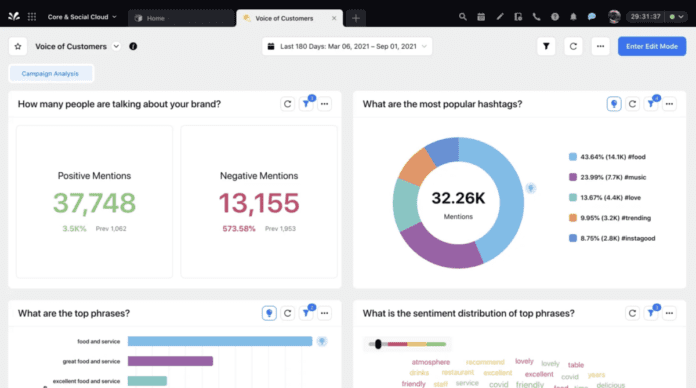Last Updated on July 17, 2024 by Ali Hamza
Social media has woven itself into the fabric of our daily lives and has assumed a pivotal role in how businesses promote their products and services. To ensure the success of their social media endeavors, marketers must fully embrace the concept of social media analytics. As the age-old saying goes, “You can’t manage what you can’t measure,” and this rings especially true in the realm of social media marketing.
Social media analytics involves the systematic collection and analysis of data to gauge the performance of your social media posts and campaigns. It offers invaluable insights into your audience, their behaviors, and the effectiveness of your marketing efforts. In this in-depth guide, we will delve into the world of social media analytics, elucidating its significance and how to leverage it to enhance your marketing campaigns.
Table of Contents
Unraveling the Essence of Social Media Analytics
At its core, social media analytics entails the monitoring and measurement of diverse metrics associated with your presence on social media platforms. These metrics encompass likes, shares, clicks, conversions, audience reach, engagement, and more. Social media analytics grants you a deeper understanding of how your content is faring and how it resonates with your audience.
Many brands rely on social media automation, often enhanced by artificial intelligence, to automatically track these metrics. It furnish a comprehensive view of your social media performance, making it easier to pinpoint areas for improvement and track your progress over time.
How Social Analytics Empowers Customer Understanding
Comprehending your customers lies at the heart of effective marketing, and social media analytics plays a pivotal role in this endeavor. Here are some pivotal ways in which social analytics enriches your insight into your audience:
1. Audience Size
Understanding the size of your audience is foundational. It refers to the number of followers or subscribers you have on your social media platforms. While a larger audience may appear enticing, it’s essential to note that engagement does not always correlate with size. Often, a smaller, more engaged following surpasses a large, disinterested one.
2. Engagement Levels
Engagement stands as a pivotal metric in social media analytics. It transcends mere followers; it gauges the actions your audience takes when interacting with your content. These actions encompass commenting, sharing, liking, and clicking through to your website. A surge in engagement expands the reach of your content.
3. Customer Demographics
Understanding the demographics of your customers is indispensable for precise targeting. Metrics like age range, income level, geographic location, or job title enable you to tailor your marketing strategies to specific customer segments. This allows you to focus your efforts on individuals most likely to become future customers.
Leveraging Analytics to Outperform Your Competition
Social media analytics is not solely about monitoring your own performance; it extends to scrutinizing discussions about your competitors. Analyzing both positive and negative conversations about your competitors yields invaluable insights for refining your offerings.
By sidestepping the same pitfalls as your competitors and addressing the concerns highlighted by their customers, you stand a chance of winning over those who have not yet pledged loyalty to a specific brand. Monitoring your competitors’ conversations and actions on social media serves as an essential step in crafting a competitive intelligence strategy.
Selecting the Optimal Social Media Metrics
While an array of metrics can be tracked in social media analytics, not all of them carry equal weight. It is imperative to concentrate on metrics aligned with your business goals and indicative of genuine success. Here are some pivotal metrics to contemplate:
1. Audience Analysis: Social media analytics tools can assist in identifying your most engaged users on each social platform. Grasping what resonates with your audience enables you to fine-tune your messaging. These tools can also pinpoint valuable followers who could emerge as influencers for your brand.
2. Post Reach and Results: Recognizing the impact of your posts and campaigns on your audience is essential. Metrics like engagement, click-through rates, and conversion rates facilitate an assessment of your content’s effectiveness. Analyzing which posts and content types receive the most engagement and conversions can inform your content creation strategy.
3. Platform Engagement: Social media analytics furnishes insights into which platforms yield the best results. This data often lies beneath the surface and demands data-driven insights. Knowing which social networks generate the most engagement enables you to allocate your budget and resources efficiently.
4. Optimal Posting Times: The timing of your posts can exert a substantial influence on their success. Social analytics can assist in identifying the best times to post, predicated on when your audience is most active. Once you pinpoint the sweet spot, automation can ensure you never miss an opportunity to connect with your audience.
Utilizing Social Media Analytics to Elevate Your Campaigns
Once you have a firm grasp of social media metrics, you can commence utilizing real-time insights to elevate your campaigns. Here are some steps to consider:
1. Define Your Objectives
Every social media campaign should harbor a clear objective. Whether it’s enhancing brand awareness, fostering audience growth, or driving direct sales, your selection of metrics hinges on these objectives. For instance, a brand awareness campaign may prioritize likes, shares, and follows, while a campaign geared toward boosting website traffic will accentuate click-through rates.
Delineating your campaign’s objectives equips you to measure its success more effectively.
2. Choose Your Optimal Channels
You need not maintain a presence on every social media platform to thrive. Over time, with the aid of social media analytics, you can ascertain which platforms offer the most favorable return on investment (ROI) for your time and resources based on your campaign’s objectives.
In a world with over 4.5 billion social media users, businesses must engage with their audience on social media. However, it’s not just about being present; it’s about using social media analytics to fine-tune your content for maximum social media ROI.
3. Gauge Success
Implement your chosen social media analytics tools to gauge the success of your endeavors. Construct tailored reports and dashboards to track the specific metrics most relevant to your campaign. Assess whether you attained your SMART goals, whether the selected metrics narrate a compelling story, and whether your tools align with your business requirements.
4. Adapt as Necessary
After assessing the success of your social media analytics efforts, scrutinize whether any aspect of your strategy necessitates adjustment. This might involve altering the metrics you monitor, adopting new tools, or refining your reporting and strategy.
The process of tracking and applying social media analytics is a continual journey. Consistently revisiting and adapting your approach ensures that it harmonizes with your objectives and effectively engages your audience.
Conclusion
By acquainting yourself with your audience, monitoring your competitors, and zeroing in on the most pertinent metrics, you can fine-tune your social media campaigns for optimum results.
As technology marches forward, the landscape of social media analytics will likewise evolve. Fresh tools and techniques will surface, affording even more potent insights. Staying updated and embracing these advancements is the key to maintaining an edge in the ever-evolving domain of social media marketing.
















